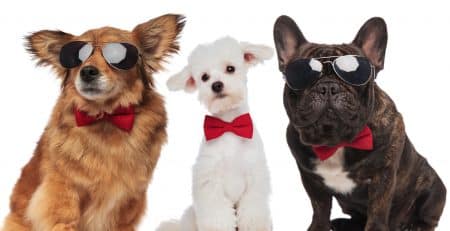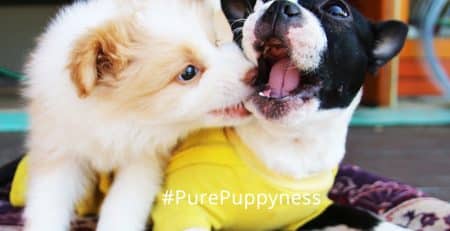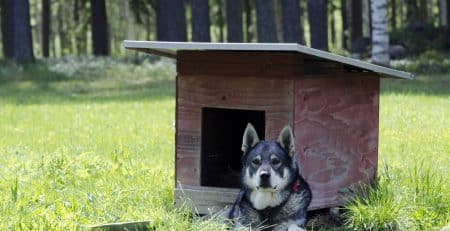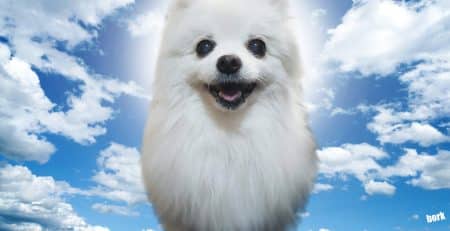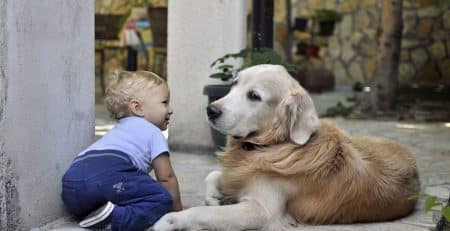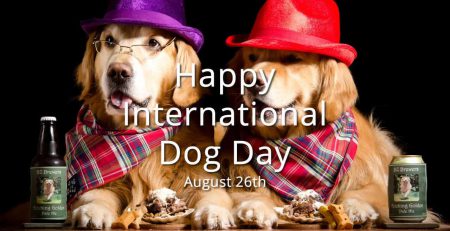Danish Dog Breeds
Behold Denmark, where there are twice as many bicycles as there are cars, and you’re never more than 30 kilometres from the sea. Denmark has given the world artists, authors, philosophers, Lego and more.
Among the country’s contributions to the world are several wonderful dog breeds. Oddly enough, one dog breed that is not actually Danish is the Great Dane, as despite the name, these dogs were first bred in Germany. It’s time to have a look at Denmark’ dog breeds.
Broholmer
The Broholmer is a Mastiff-type dog with a strong, rectangular build. This dog emanates power and agility, with its large broad head and sabre-like tail. First developed in the 18th century by gamekeeper Sehested of Broholm, the Broholmer was a mix between German dogs and the English Mastiff. The breed proved an excellent guard dog, and became fairly popular in the 19th century, though it almost died out at the time of the Second World War.
Friendly, calm, and ever watchful, the Broholmer needs a confident owner who’s willing to give it proper exercise and training. They are a giant breed, so it’s best to avoid hard exercise for very young Broholmers, as you risk injuring your dog.
Danish Spitz
Also called the Dansk Spids, this dog is sweet and sociable, and was often kept in the countryside as a “nanny dog”, to keep an eye on children. They are also popular companions for people of all ages! They have a luxurious coat that is often snowy white, but can also be creamy or biscuit-coloured.
The Danish Spitz was exceptionally popular in the 1930s, but their numbers dropped dramatically until the 1980s, when the breed was revived. Today these healthy, hardy dogs are often kept as pets, though they retain the ability to do farm work.
Danish-Swedish Farm dog
As the name suggests, this breed started out in Denmark and southern Sweden, but soon became popular all over Scandinavia. This medium-sized dog is compact, with a small triangular head. The coat is predominately white, with a few coloured patches. The tail varies in length, and may be any length between full or bobbed.
The Danish-Swedish Farm dog is easy-going and loving, which makes it both a brilliant pet and excellent working dog. They are great at hunting vermin; if you have a mouse or rat problem, a Danish-Swedish Farm dog will soon sort it out! Their agility makes them perfectly suited for canine sports such as agility, fly-ball, and coursing.
Old Danish Pointer
Scandinavia’s finest (and only!) pointer is descended from the dogs of the wandering Romani, and 18th century farm dogs. The Romani dogs, which probably had some Spanish pointer blood, were hardy dogs and excellent hunters, though they could also be used as draft animals. The local farm dogs of the time were hounds, with a touch of Bloodhound in their lineage. The union of these animals led to a calm and courageous dog that soon became Denmark’s favourite hunting dog.
The Old Danish Pointer (gammel dansk hønsehund in Danish) is a medium sized dog, though the males are much larger than the females. They have short dense fur, which is white with brown markings such as patches and speckles. They have floppy ears and large, soulful eyes. Though the Old Danish Pointer generally has a calm temperament, they are working dogs and need plenty of exercise to stay fit and happy.
Greenland Dog
Greenland is part of the kingdom of Denmark, so it’s only fitting to include the Greenland Dog in this list. Called Kalaallit Qimmiat in Greenlandic, and Grønlandshunden in Danish, the dog was brought to North America and Greenland thousands of years ago, by the Thule people of Siberia. The Thule first arrived in North America 12,000 years ago, but dogs (the ancestors of the Greenland dog) only appeared in Greenland 4000 years ago.
Genetically, the Greenland Dog is very similar to the extinct Taimyr wolf. This is evident in the breed’s appearance. They have a heavy build, with thick fur and small triangular ears. The tail curls up to lie along the back. Like many Artic breeds, the Greenland Dog has a double coat, with a rough outer coat and a dense, warm inner coat. This breed is prized for its endurance and strength. They were used to pull sleds; indeed, the explorer Roald Amundsen used Greenland Dogs as sled dogs for his Antarctic expedition.


